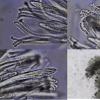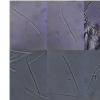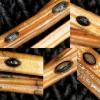
09-12-2025 12:06
 Andgelo Mombert
Andgelo Mombert
Bonjour,Je recherche l'article concernant Hypobryo

07-12-2025 16:07
Arnold BüschlenHallo, ich habe in einer Moos-Aufsammlung (epiphy

08-12-2025 21:04
Mark Stevens"Hello everyone,I'm relatively new to microscopy (

08-12-2025 18:59
 Lothar Krieglsteiner
Lothar Krieglsteiner
.. found by a seminar-participant, I do not know t

08-12-2025 17:37
 Lothar Krieglsteiner
Lothar Krieglsteiner
20.6.25, on branch of Abies infected and thickened

16-03-2014 22:00
Hello,I found this species a few months ago but ha

08-12-2025 13:39
Thomas Læssøehttps://svampe.databasen.org/observations/10572899
Lophodermium on Pinus pumila
Mathias Hass,
08-04-2025 11:22

Hi,
I have some trouble with this Lophodermium. I suppose there are 3 possible species...but which one? I hope some can help.
Found in March in large numbers on attached needles of Pinus pumila (a 5-needle species) from a botanical garden, Denmark. P. pumila is not a naturally occurring tree in Denmark. Apotecia in conspicuously regular intervals along the needles, very few transverse black lines, on one occasion a brown line.
Apotecia: about 0,63 mm (0,46 mm - 0,81 mm) long (n=10), ellipsoid. No clear black line surrounding the apotecia. Lips look to me greyish. On one occasion seen in bright sunlight the lips appeared bluish. I do not feel sure about the colour, but red they are not.
Asci: when mature > 100 my long, up to about 130 x 15 my, typically 116x12 my, 8 spores arranged in parallel.
Ascospores: Direct after collection (few spores): 83,5 (73,9-93,0) my x 1,9 (1,8-2,1) my, Q=43, n=10. Surrounded by a 2,4 my thick gelatinous sheet. No appendages seen. After incubation wet and at RT for a week: 73,7 (63,3-87,6) x 2,3 (2,0-2,8) my, Q=32 , n=10. The spores seem to become significantly shorter but wider (and paraphyses get swollen tips).
Paraphyses: cylindrical, 2,5 my wide, somewhat bent tips but not swollen. The tips have a large number of diffracting small droplets which makes them appear brownish, at least in relatively immature apotecia. After incubation pararaphyses have swollen tips, up to 4 my broad.
Asci: when mature > 100 my long, up to about 130 x 15 my, typically 116x12 my, 8 spores arranged in parallel.
Ascospores: Direct after collection (few spores): 83,5 (73,9-93,0) my x 1,9 (1,8-2,1) my, Q=43, n=10. Surrounded by a 2,4 my thick gelatinous sheet. No appendages seen. After incubation wet and at RT for a week: 73,7 (63,3-87,6) x 2,3 (2,0-2,8) my, Q=32 , n=10. The spores seem to become significantly shorter but wider (and paraphyses get swollen tips).
Paraphyses: cylindrical, 2,5 my wide, somewhat bent tips but not swollen. The tips have a large number of diffracting small droplets which makes them appear brownish, at least in relatively immature apotecia. After incubation pararaphyses have swollen tips, up to 4 my broad.
Kind Regards
Mathias




